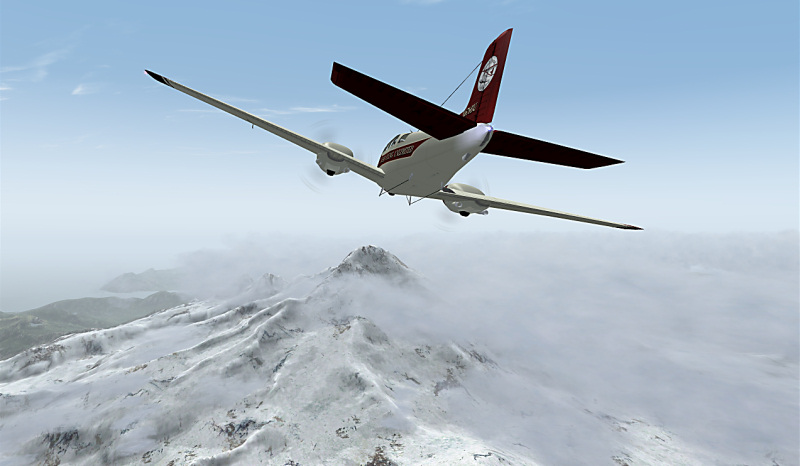Heading into Cook Inlet, a large estuary (a semi-enclosed coastal body of water with one or more rivers flowing into it) stretching 180
miles from the Gulf of Alaska to Anchorage and covering about 62.000 square miles. The watershed includes the drainage areas of
Mount McKinley. Within the area there are several national parks and four historically active volcanoes. Cook Inlet provides access
to the port of Anchorage at the northern end and to the smaller port of the city of Homer, further south.
Cook Inlet was first explored by Europeans in 1778, when James Cook sailed into it while searching for the Northwest Passage. It was
named after Cook in 1794 by George Vancouver, who had served under Cook in 1778. An interesting detail is that Turnagain Arm, lo-
cated south of Anchorage, was named by William Bligh. You may know him as the Commander of HMS Bounty from 'Mutiny on the Bounty'.
Heading northeast, flying over Lake Clark National Park and crossing Mount Iliamna, an ice and snow covered stratovolcano, which
prominently rises up to 10.000 feet. The same as with the Augustine Volcano, volcanic ash plumes from Iliamna are a major hazard
to aircraft using Anchorage International and other local airports. Although it has been sleeping since its last activity on March 1st. 1953,
every now and then the volcano emits steam and gas, and small earthquakes are often detected beneath the summit area.
Gorgeous scenery ... just look how Mount Iliamna peaks through the clouds!

70 miles northeast of Mount Iliamna lies the McArthur River oil field. Here you can see the Dolly Varden platform which is located
at 60






 Great looking oil rig.
Great looking oil rig.









